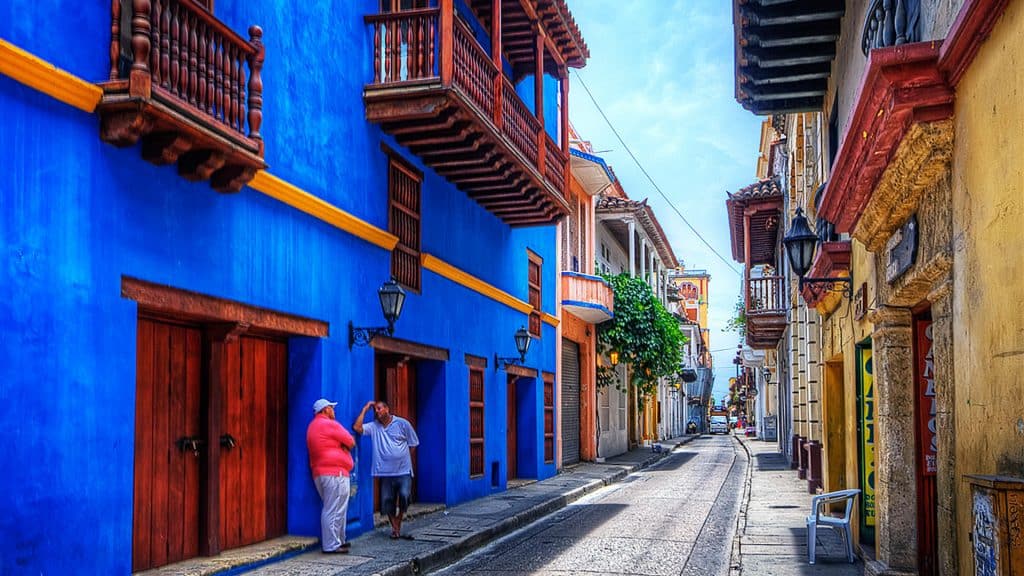
Colombia is a country located in the northwestern region of South America. It is the fourth largest country in the continent and is known for its diverse geography, rich history, and vibrant culture. In this article, we will discuss the history, geography, population, economy, political country division, best places to visit, airports, and other relevant information about Colombia.
History of Colombia
The region that is now Colombia was originally inhabited by indigenous tribes such as the Muisca, Tairona, and Quimbaya. In 1499, Spanish explorer Alonso de Ojeda arrived in the area, marking the beginning of Spanish colonization. Colombia gained independence from Spain in 1819, along with other South American countries. Throughout the 20th century, Colombia experienced political instability, violence, and conflict between various political groups and drug cartels. However, in recent years, the country has made significant progress towards peace and stability.
Geography of Colombia
Colombia is a diverse country with a varied topography, consisting of coastal plains, highlands, and mountain ranges. The Andes mountain range runs through the country from south to north, dividing the country into three distinct regions: the Andean region, the Caribbean region, and the Pacific region. The Amazon rainforest covers a large portion of southern Colombia, while the eastern part of the country is covered by the vast plains of the Orinoco River basin.
Population of Colombia
Colombia has a population of over 50 million people, making it the third most populous country in Latin America after Brazil and Mexico. The majority of the population is concentrated in urban areas, with the largest cities being Bogotá, Medellín, and Cali. Colombia is also home to a diverse range of ethnic groups, including Afro-Colombians, Indigenous people, and people of European descent.
Economy of Colombia
Colombia has a mixed economy, with a growing private sector and a significant public sector. The country is rich in natural resources, including oil, coal, and gold. The agricultural sector is also an important part of the economy, with coffee being one of the country’s major exports. In recent years, Colombia has made significant progress in reducing poverty and inequality, although challenges remain in areas such as corruption and unemployment.
Political Country Division of Colombia
Colombia is divided into 32 departments (departamentos) and one capital district (Distrito Capital de Bogotá). Each department has a governor and a departmental assembly, while the capital district is governed by a mayor and a city council. The departments are further divided into municipalities (municipios), which are governed by mayors and municipal councils.
Best Places to Visit in Colombia
Colombia is a beautiful country with a wide variety of tourist attractions. Some of the best places to visit include:
Cartagena: a UNESCO World Heritage site with colonial architecture, beautiful beaches, and a vibrant nightlife.
Bogotá: the capital city, known for its museums, art galleries, and historic landmarks.
Medellín: a bustling city with a vibrant cultural scene and stunning views of the surrounding mountains.
Tayrona National Park: a nature reserve with beautiful beaches, lush rainforest, and ancient ruins.
San Agustin: an archaeological site with ancient stone statues and other artifacts.
Airports in Colombia
Colombia has several international airports, including El Dorado International Airport in Bogotá, José María Córdova International Airport in Medellín, and Rafael Núñez International Airport in Cartagena. There are also many smaller regional airports throughout the country, making it easy to travel within Colombia.
Media of Colombia
Colombia has about 28 TV channels and more than 26 papers written. Colombia has only one national newspaper coverage – Weather -. Television channels with national coverage are: Canal RCN, Caracol, Channel One and Channel A.
Language of Colombia
Spanish is the official language. The languages and dialects of ethnic groups are official in their territories. In San Andres and Providencia, English is also spoken.
Colombia’s climate
Colombia’s climate is diverse due to its location near the equator and the varying topography of the country. The climate can range from tropical to alpine depending on the altitude and location.
In general, the country has two main seasons – wet and dry. The wet season, or “invierno”, occurs from May to November, while the dry season, or “verano”, occurs from December to April. However, this can vary depending on the region.
In the coastal regions, the climate is typically hot and humid, with temperatures averaging around 28°C (82°F) and high levels of rainfall throughout the year. The Caribbean coast is particularly hot, with temperatures reaching up to 35°C (95°F) in some areas.
In the Andean region, the climate is more temperate due to the altitude, with temperatures ranging from 10°C (50°F) to 25°C (77°F) depending on the altitude. The higher elevations can experience freezing temperatures and even snowfall.
The eastern plains, or Llanos, have a tropical savanna climate with distinct wet and dry seasons. The wet season is from May to October, while the dry season is from November to April. The temperature in this region can reach up to 38°C (100°F) during the dry season.
In the Amazon region, the climate is hot and humid throughout the year, with heavy rainfall and high humidity levels. Temperatures can reach up to 32°C (90°F) during the day and drop to around 20°C (68°F) at night.
Overall, Colombia’s climate is varied and dependent on the region. It is important to check the climate of the specific area you plan to visit before traveling, as it can greatly affect your trip.
Remember we have another blog and you can read about What makes Sibenik in Croatia so Special?. An amazing places in the balkans to visit.


